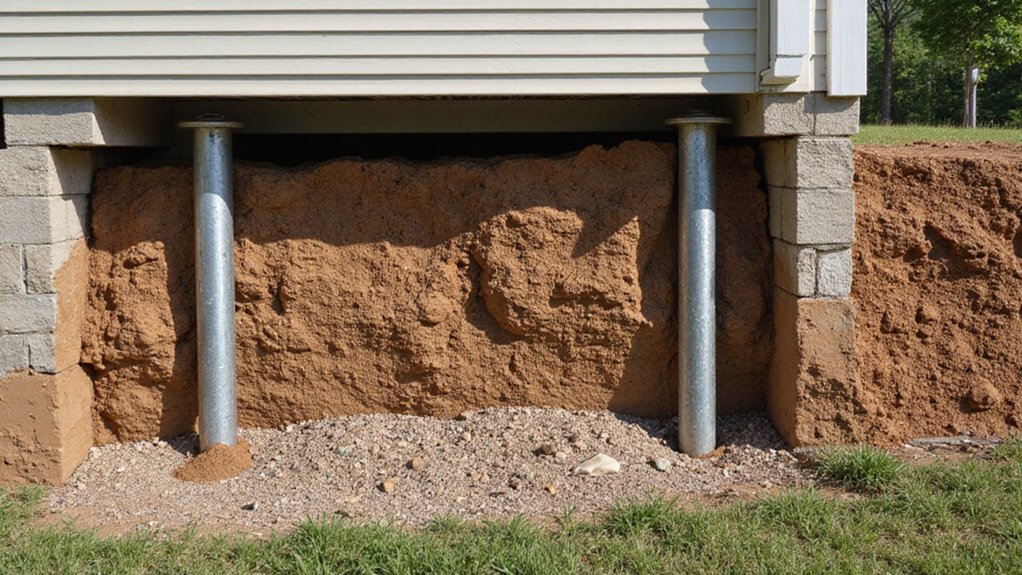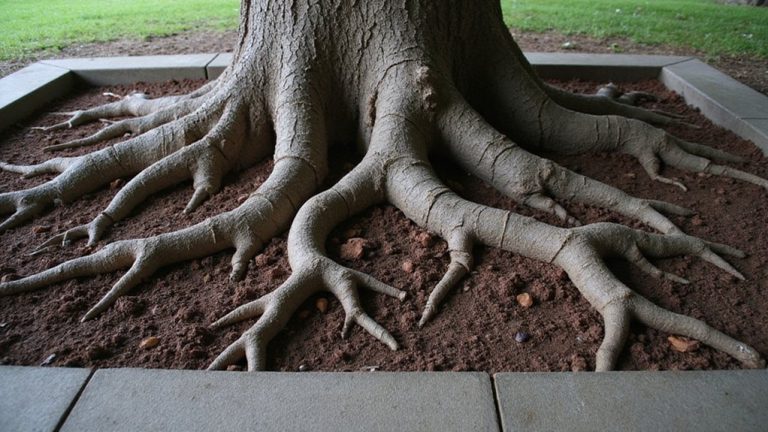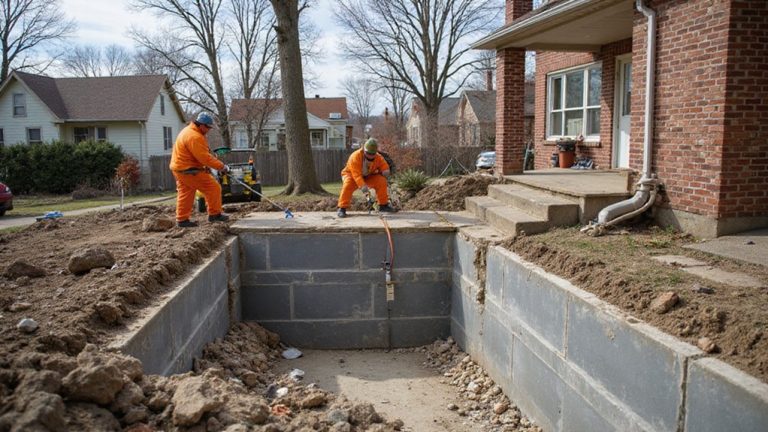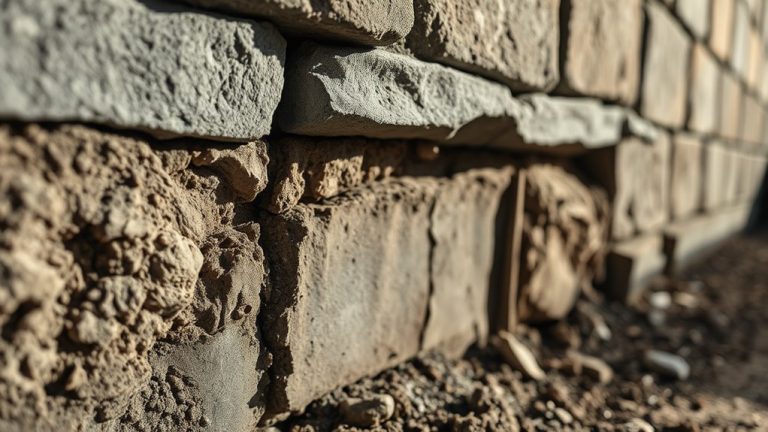Have you noticed strange cracks in your walls or uneven floors that seem to whisper structural concerns? Foundation settlement isn't just a cosmetic issue—it's a serious problem that can compromise your home's stability and safety. Understanding how foundation piers work could be the key to protecting your most prized possession and preventing costly future repairs. But what exactly makes these underground supports so critical, and how can they alter your home's foundation from vulnerable to resilient?
Understanding Foundation Settlement and Its Warning Signs
When your home's foundation begins to settle, it can trigger a cascade of structural challenges that shouldn't be ignored. Shifting ground factors and soil compaction issues often contribute to this problematic process.
You might notice warning signs like uneven floors, wall cracks, or doors that stick unexpectedly. These symptoms indicate your foundation's stability is compromised and needs professional assessment. Understanding these early indicators can help you prevent more extensive damage and costly repairs. Foundation repair professionals in Detroit recommend regular inspections to catch potential settlement issues before they become critical structural problems.
Types of Foundation Piers: A Comprehensive Overview
Once you've identified foundation settlement concerns, understanding the different types of foundation piers becomes critical to addressing structural stability.
Steel, concrete, and helical piers each offer unique solutions depending on your home's specific soil conditions and concrete composition. Steel push piers provide strong, deep support by driving through unstable layers, while helical piers work well in softer soils by screwing into the ground. Concrete piers, traditionally used, can be effective in certain situations but might require more extensive installation processes.
Your choice depends on your home's specific needs and ground characteristics. In St. Clair Shores, local foundation issues often stem from weak soil and extreme temperature fluctuations that can compromise structural integrity.
The Science Behind Foundation Pier Installation
If foundation settlement has left you concerned about your home's structural integrity, understanding the scientific principles behind pier installation can provide reassurance. Specialists commence by undertaking comprehensive soil composition analysis to ascertain the precise cause of foundation movement.
They'll meticulously monitor subsurface moisture levels, which can tremendously impact ground stability. Specialized hydraulic equipment is used to drive piers deep into stable soil layers, creating a permanent support system for your home's foundation. This scientific approach guarantees your home remains secure, addressing settlement issues with precision and proficiency.
Benefits of Implementing Foundation Pier Solutions
Building upon the scientific principles investigated in foundation pier installation, homeowners can now appreciate the tangible benefits of this solution. Foundation piers offer exceptional soil stabilization, effectively redistributing your home's weight and preventing further structural damage.
They'll help you restore your foundation's integrity, reducing long-term repair costs and increasing property value. By strategically placing these support structures, you'll mitigate foundation settlement risks and protect your investment. These innovative solutions not only stabilize your home but also provide peace of mind, ensuring your living space remains safe, secure, and structurally sound for years to come.
Identifying When Your Home Needs Foundation Pier Support
When foundation problems start to emerge, homeowners need to recognize the critical warning signs that suggest foundation pier support might be necessary.
Look for cracked walls, especially near windows and doors, which could indicate serious structural shifts. Uneven floors aren't just an aesthetic issue—they're a red flag signaling potential foundation instability.
If you've noticed doors that stick, windows that won't close properly, or visible gaps between walls and floors, these are urgent signals. Don't ignore these symptoms; they'll only worsen over time, potentially compromising your home's structural integrity and safety.
Cost Analysis: Foundation Pier Investment vs. Potential Structural Damage
Foundation repair costs can quickly escalate from a manageable expense to a financial nightmare if homeowners delay addressing structural issues. By investing in foundation piers early, you'll save significant money in the long-term cost implications.
Professional assessments can reveal potential damage before it becomes catastrophic, providing a substantial return on investment. Structural problems don't improve with time, and each year of waiting increases repair complexity and expenses.
Preventative pier installation might seem costly upfront, but it's far less expensive than extensive foundation reconstruction or potential home devaluation.
Professional Assessment and Installation Process
Because structural integrity demands expert intervention, homeowners should understand the critical steps involved in professional foundation pier evaluation and installation. When evaluating contractor qualifications, you'll want to verify they're licensed, experienced, and have positive local references.
The inspection timeline typically involves:
- Thorough foundation assessment
- Detailed diagnostic measurements
- Tailored stabilization recommendation
Professional installers will carefully examine your home's specific structural needs, using advanced technologies to pinpoint precise pier placement. They'll discuss potential solutions, elucidating each step to help you make an informed decision about safeguarding your home's foundation and long-term stability.
Long-Term Maintenance and Monitoring of Foundation Piers
Structural vigilance becomes your best defense against potential foundation complications after pier installation. Regular inspections are pivotal to maintaining your home's stability and preventing expensive repairs.
You'll want to perform active monitoring at least twice a year, checking for signs of soil movement, pier shifting, or structural stress.
Look for hairline cracks, uneven floors, or doors that stick, which might indicate foundation shifts. While professional evaluations every few years are recommended, your consistent observation helps catch early warning signs.
Frequently Asked Questions
Can Foundation Piers Be Installed in Any Weather Condition?
You'll need to ponder seasonal climate and soil composition when installing foundation piers. Extreme temperatures and moisture levels can impact installation timing and effectiveness, so consult professionals who'll assess your specific conditions.
How Long Does a Typical Foundation Pier Installation Take?
You'll find that a typical foundation pier installation can take 1-3 days, minimally altering your property and potentially increasing its value while providing long-lasting structural support for your home.
Will Foundation Piers Increase My Home's Resale Value?
Foundation piers can amplify your home's resale value by providing augmented home stability. You'll attract potential buyers who appreciate a structurally sound investment with increased property value and peace of mind.
Are Foundation Pier Repairs Covered by Homeowners Insurance?
Most homeowners' insurance won't cover foundation pier repairs unless the damage results from sudden, covered events. You'll need to review your policy's deductible requirements and traverse the claims process carefully.
Do Foundation Piers Work on All Types of Soil?
You'll need to examine your soil's composition and water table depth cautiously. Not all soils can support foundation piers evenly, so consulting a professional for site-specific evaluation is vital to ensuring successful stabilization.



